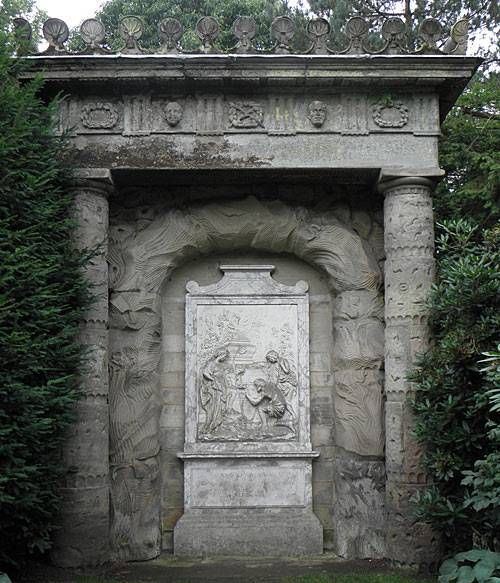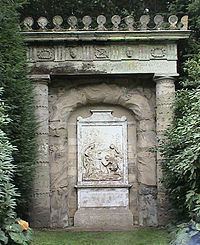 | ||
The shugborough inscription deciphered by a former nsa agent
The Shugborough Inscription is a sequence of letters – O U O S V A V V, between the letters D M – carved on the 18th-century Shepherd's Monument in the grounds of Shugborough Hall in Staffordshire, England, below a mirror image of Nicolas Poussin's painting, the Shepherds of Arcadia. It has never been satisfactorily explained, and has been called one of the world's top uncracked ciphertexts.
Contents
- The shugborough inscription deciphered by a former nsa agent
- Shugborough inscription unsolved mysteries arcadian shepherds uncracked cipher texts
- Monument
- Theories
- Priory of Sion and the Holy Grail
- References

Shugborough inscription unsolved mysteries arcadian shepherds uncracked cipher texts
Monument

The monument was built sometime between 1748 and 1763, commissioned by Thomas Anson, paid for by his brother, Admiral George Anson, and fashioned by the Flemish sculptor Peter Scheemakers. The relief copy of the Poussin painting is contained within a rustic arch, and shows a woman and three shepherds, two of whom are pointing to a tomb. On the tomb is carved the Latin text Et in arcadia ego ("I am also in Arcadia" or "I am, even in Arcadia"). The carving displays a number of small alterations from the original painting, and an extra sarcophagus has been placed on top of the main tomb. Above the Poussin scene are two stone heads, one showing a smiling bald-headed man, the other bearing a likeness to the goat-horned Greek god Pan.

Below the relief carving on the monument, an unknown craftsman carved the mysterious letters, eight on the first line, two on the second line, contained within the letters 'D M' on the second line. On Roman tombs, the letters 'D M' commonly stood for Dis Manibus, meaning "dedicated to the shades". The Shugborough Monument, however, is not a Roman tomb so this interpretation for D and M can be misleading.
Theories

Josiah Wedgwood, Charles Darwin and Charles Dickens are all said to have attempted to solve the enigma and failed.

In recent decades, investigators have proposed several possible solutions. Some of these are acrostic, interpreting each letter as the initial letter of a word.

Non-acrostic efforts include:
Despite the many theories, staff at Shugborough Hall remain sceptical of all proposed solutions. A spokesman for the property (now owned by the National Trust) was quoted in 2014 asserting, "We get five or six people a week who believe they have solved the code so we are a bit wary of them now."
Priory of Sion and the Holy Grail
In 1982, the authors of the pseudohistorical The Holy Blood and the Holy Grail suggested that Poussin was a member of the Priory of Sion, and that his Shepherds of Arcadia contained hidden meanings of great esoteric significance.
In 2003, Dan Brown developed similar themes in his bestselling novel The Da Vinci Code, and in 2004 Richard Kemp, the general manager of the Shugborough Estate, launched a promotional campaign which asserted a connection between Shugborough, and in particular the Shugborough inscription, and the Holy Grail.
Speculation then grew that the inscription may encode secrets related to the Priory of Sion, or the location of the Holy Grail. As part of the Shugborough promotion, some individuals who had previously worked as codebreakers at Bletchley Park pursued this line of investigation. Oliver Lawn proposed that the letters may encode the phrase Jesus H Defy, where the H supposedly stands for "Christos" (Greek for "Messiah") and the reference is to a Jesus bloodline which allegedly descends from a non-divine Jesus and was preserved by the Priory. Sheila Lawn, his wife, preferred the love-story theory. Despite the couple's previous employment, neither of their suggestions enjoyed reliable cryptanalytic support and both were presented as speculative.
